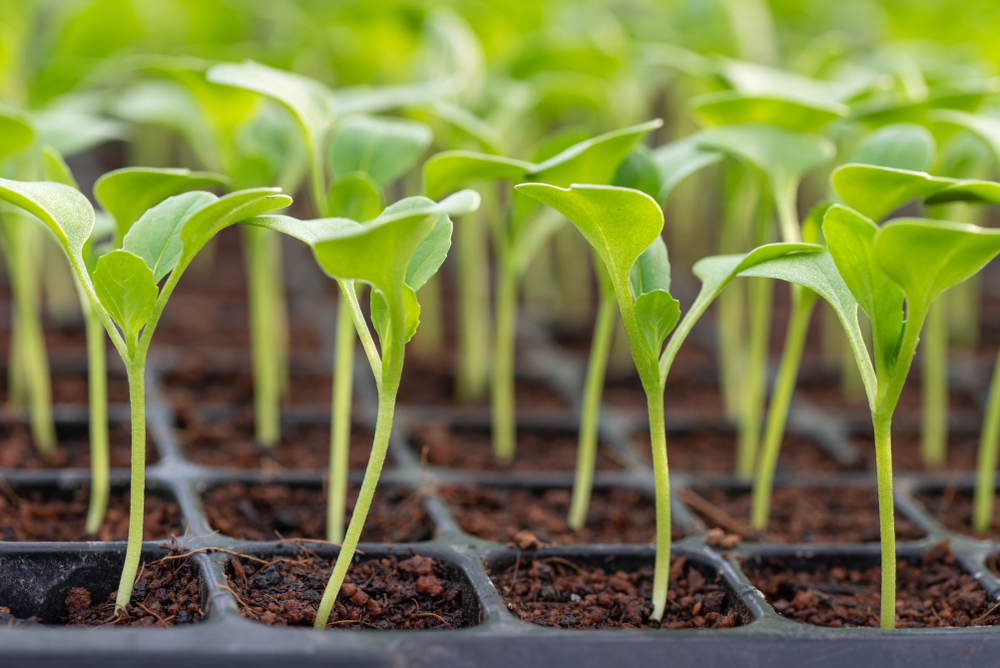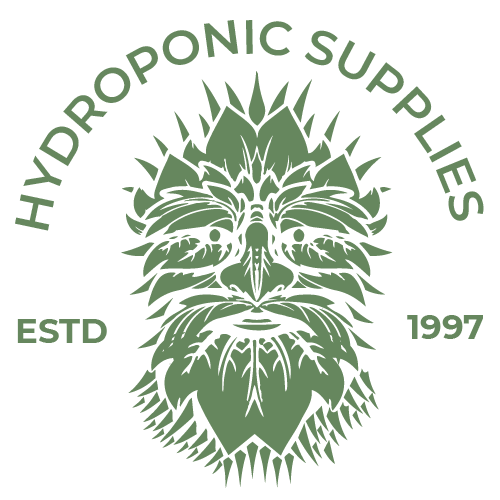
As the popularity of hydroponic gardening continues to surge, both outdoor and indoor gardeners across many regions in Australia are exploring this innovative method of cultivating plants. One of the most rewarding aspects of hydroponics is the ability to propagate seedlings with greater control over the growth environment, thereby enhancing plant health and overall yield.
Hydroponic gardening offers several advantages over traditional outdoor gardening methods. The controlled environment eliminates the dependence on external weather conditions, making it suitable for year-round cultivation. Whether you’re growing indoors from seeds or in an outdoor hydroponic setup, the process ensures consistent growth, optimal nutrient delivery, and reduced risk of disease transmission.
In this guide, Creative Grow store delve into the intricacies of propagating seedlings in hydroponics, discussing the steps involved and the crucial factors that contribute to successful propagation.
Simple Guide to Starting Hydroponic Seedlings and Monitoring Key Variables
Hydroponics, a method of growing plants without soil, has gained significant popularity in recent years, both in outdoor gardening and indoor cultivation, especially in many regions across Australia. This innovative technique offers numerous advantages, particularly in areas with challenging soil conditions or limited space.
While outdoor gardening has its traditional charm, growing hydroponically indoors from seed presents distinct benefits. Unlike traditional methods, this approach allows for planting without a lengthy germination process, reducing the chance of disease and increasing overall efficiency.
Through careful sterilization of hardware and a focus on the propagation process, successful hydroponic cultivation is achieved. The propagation system, where plants are typically nurtured until they’re ready for transplanting, requires attention to detail, including the proper removal of the propagation lid to facilitate the actual germination process.
Here, Creative Grow Store outlines the steps for successful hydroponic seed starting and introduce the vital factors to watch for healthy seedlings:
Propagation Process: Step by Step

Hydroponics is a great way to grow plants indoors, but it requires careful management. By following the steps for seed starting and monitoring essential variables like temperature, pH, light, nutrients, and more, you can create a thriving hydroponic garden and enjoy healthy plants year-round. Remember, the success of your hydroponic venture depends on maintaining these factors for optimal plant growth and yield.
By understanding and managing these factors, you can successfully propagate seedlings in hydroponics and set the foundation for healthy and productive plants in your hydroponic garden.
Achieving successful hydroponic seed-starting involves careful preparation, attention to detail, and a systematic approach. Here are the steps to ensure your hydroponic seedlings get off to a strong start:
Preparation and Sterilisation of Hardware:
Before embarking on the propagation process, it’s vital to ensure that all equipment and materials are properly sterilized. This reduces the chances of introducing harmful pathogens that could harm the seedlings. Cleanse containers, growing mediums, and any tools using a mild bleach solution.
Select a Growing Medium:
Decide on the growing medium you’ll use for seed-starting. Options include rockwool cubes, coconut coir, perlite, or even specialized germination plugs. The medium should provide stability, moisture retention, and good aeration.
Moisten the Growing Medium:
Ensure the chosen growing medium is adequately moistened before planting. Thoroughly water or soak the medium until it’s evenly damp but not dripping.
Selecting Seeds:
Choose high-quality seeds that are suited to the Australian outdoor conditions or your indoor hydroponic setup. Opt for reputable seed sources to guarantee the best chances of successful germination.
Plant Seeds at Appropriate Depths:
Follow the guidelines provided on the seed packet for recommended planting depth. Carefully place seeds in the growing medium according to these instructions.
Cover Seeds for Germination:
To maintain humidity during the germination period, cover the planted seeds with a thin layer of vermiculite or place a plastic humidity dome over the seed trays. This helps create a mini greenhouse effect.
Remove the Propagation Lid:
Once the seedlings have emerged and developed their first set of true leaves, it’s time to remove the propagation lid. This step helps acclimatize the seedlings to slightly lower humidity levels, preparing them for the transition to the vegetative growth phase.
Maintain Proper Temperature:
Maintain the ideal temperature range for seed germination, which varies depending on the plant species. A heat mat can be used to achieve consistent warmth if necessary.
Provide Adequate Lighting:
If the seeds require light to germinate, ensure they receive the appropriate amount of light. Use grow lights or natural sunlight to facilitate germination.
Water Care:
Using plain water or a much diluted hydroponic nutrient solution. Avoid strong nutrient solutions at this stage, as young seedlings are sensitive to nutrient concentrations.
Monitor Germination:
Keep a close eye on the germination process. Once the seeds begin to sprout and show their first set of true leaves, it’s time to move to the next phase.
Remove the Cover:
If you used a humidity dome or cover, remove it as soon as the seedlings emerge. This helps prevent excessive humidity and encourages seedlings to adapt to the ambient environment.
Introduce Nutrients Gradually:
Start introducing a mild hydroponic nutrient solution once the seedlings have established their first set of true leaves. Seedlings require a milder nutrient concentration compared to mature plants. Gradually increase nutrient strength as the seedlings grow to prevent nutrient burn.
Maintain Proper Light:
Continue providing adequate light for healthy growth. Adjust lighting intensity and duration based on the specific light requirements of the plant species.
Monitor and Adjust pH Levels:
Regularly check the pH level of the nutrient solution and adjust as needed to ensure optimal nutrient uptake. Maintain a pH range suitable for seedling growth (around 5.8 to 6.2).
Transplant at the Right Stage:
Once the seedlings have developed sturdy roots and a few sets of true leaves, they are ready for transplantation. If using propagation plugs, wait until roots are visible outside the plugs.
Handle Seedlings with Care:
During transplant, handle seedlings gently to avoid damaging their roots. Transfer them to the main hydroponic system or containers with a suitable growing medium.
Optimizing Growing Conditions:
Whether you’re growing hydroponically indoors or in an outdoor setup, ensure the seedlings receive adequate light, proper ventilation, and the right nutrient balance for optimal growth. Continuously monitor and adjust conditions as needed.
In Australia, where diverse climatic conditions can impact plant growth, hydroponics provides a reliable solution. This is particularly evident in regions with harsh outdoor conditions. By controlling factors like temperature, light, and nutrient delivery, hydroponics ensures optimal growth irrespective of the unpredictable Australian climate.
Additionally, the sterilization of equipment and the propagation medium significantly reduce the risk of diseases that often hinder traditional soil-based gardening. This proactive approach not only minimizes potential setbacks but also fosters a healthier overall environment for plants to thrive.
By following these steps with attention to detail and care, you’ll increase the likelihood of successfully propagating seedlings in your hydroponic system, setting the foundation for robust plant growth and a productive harvest.
Monitoring Vital Hydroponic Factors

Propagation of seedlings in hydroponics involves several important factors that influence the success of the process. These factors ensure that the seedlings develop healthy roots, strong stems, and robust growth, setting the stage for successful plant cultivation.
Here are the key factors for seedlings propagation in hydroponics:
Seed Quality: Start with high-quality seeds that are suited for hydroponic cultivation. Healthy seeds with good genetics will lead to strong and vigorous seedlings.
Growing Medium: Choose an appropriate growing medium that provides support to the seedlings while allowing adequate air and water circulation. Common mediums include rockwool, coconut coir, perlite, and vermiculite.
Moisture and Hydration: Maintain proper moisture levels in the growing medium. Seedlings require consistent hydration for optimal germination and early growth.
Temperature Control: Maintain the right temperature range for germination and seedling growth. Each plant species may have specific temperature requirements, so adjust accordingly.
Lighting: Provide adequate and appropriate lighting for seedlings. Consider using full-spectrum grow lights or natural sunlight to ensure proper photosynthesis and prevent elongation (stretching) of seedlings.
Nutrient Solution: Prepare a mild nutrient solution that is tailored to the needs of young seedlings. Avoid strong nutrient concentrations that could stress the delicate plants.
pH Level: Monitor and adjust the pH level of the nutrient solution to ensure optimal nutrient uptake. Most seedlings prefer a slightly acidic pH range of around 5.8 to 6.2.
Air Circulation: Ensure good air circulation around the seedlings to prevent the growth of molds and diseases. Proper airflow also helps strengthen stems and promotes sturdy growth.
Humidity Management: Maintain proper humidity levels, especially during the germination phase. Using humidity domes can help retain moisture around the seedlings until they establish themselves.
Transplant Timing: Transplant seedlings at the right stage of development, typically when they have developed their first set of true leaves and sturdy roots. This prevents transplant shock and promotes healthy growth.
Hardening Off: If you’re moving seedlings from an indoor environment to an outdoor hydroponic system, gradually expose them to outdoor conditions to acclimate them. This process is known as “hardening off.”
Disease and Pest Prevention: Keep a watchful eye for signs of diseases and pests. Regular monitoring and early intervention can help prevent potential problems from spreading.
Nutrient Strength Gradation: Gradually increase the strength of the nutrient solution as the seedlings grow and develop. Young seedlings are sensitive to nutrient concentrations, so a gradual increase reduces stress.
Carbon Dioxide (CO2): Maintain proper CO2 levels for healthy growth, especially in indoor setups.
Spacing: Give seedlings enough space to grow without crowding each other. Proper spacing allows for optimal light penetration and air circulation.
Transplant Care: Handle seedlings gently during transplant to avoid damaging delicate roots. Ensure that the new growing environment provides proper conditions for continued growth.
Monitoring and Adjustment: Regularly monitor all relevant factors such as temperature, humidity, light, and nutrient levels. Make necessary adjustments to ensure optimal conditions for seedling development.
Conclusion
The propagation process stands as a paramount stage in hydroponics. Once seeds sprout, careful attention requires to transferring the seedlings from the propagation medium to the hydroponic system. This delicate step requires precision to ensure that the young plants transition seamlessly and continue to flourish. As the seedlings adapt to their new environment, the controlled conditions of hydroponics provide a stable foundation for growth.
Whether it’s leafy greens, herbs, or even fruiting plants, the benefits of hydroponics in Australian outdoor gardening are evident through improved yields, minimized disease susceptibility, and the ability to cultivate a wide range of plants that may otherwise struggle in traditional soil-based settings. As the realm of hydroponic gardening continues to captivate outdoor and indoor enthusiasts across various regions in Australia, mastering the art of propagating seedlings is paramount. By following the steps outlined in this guide, you’ll equipped with the knowledge to propagate seedlings efficiently, enhance plant growth, and harness the potential of hydroponics for year-round cultivation. Remember, the success of your hydroponic journey begins with proper propagation – the foundation upon which healthy and thriving plants are built.
